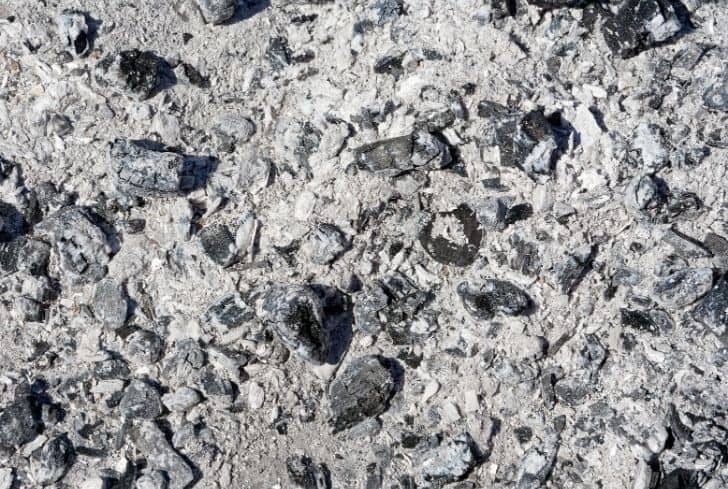What Garden Vegetables Like Wood Ashes In The Soil
Is Wood Ash Good For The Garden?
Whether you are in rural areas with a big chunk of land or the urban centers with a small garden, we all want to have a place where we can practice a bit of farming. The garden, especially the one next to the house, is where we can grow some essentials or some flowers to decorate the home. To fulfill this, the garden needs care and one of the best agents is wood ash
Wood ash can serve as an excellent agent at taking care of the garden in several ways, including helping the crops in the garden. Wood ash should, however, be used carefully as it can fail to benefit several plants. This article will look into wood ash for the garden.

Contents
- Can You Use Wood Ash in Your Garden?
- What are the Benefits of Using Wood Ash in The Garden?
- 1. Pest control
- 2. Controlling the pH of the soil
- 3. As fertilizer
- Is Wood Ash Good for Vegetable Gardens?
- How Do I Use Wood Ash in My Garden?
- 1. Compost it first
- 2. As a substitute for lime
- 3. Adding it directly to the soil
- Which Plants Like Wood Ashes?
- 1. Plants overrun by pests and diseases
- 2. Plants with potassium deficiency
- 3. Plants in overly acidic soils
Can You Use Wood Ash in Your Garden?
Of course, you can use wood ash for your garden, regardless of its size. Wood ash contains properties that are vital for the garden, the soil itself and the crops in the garden. Field and greenhouse research have confirmed the safety and practicality of using wood ash on agricultural lands.
The ash has been found to have a liming effect of between 8% and 90% of the total neutralizing power of lime and can increase plant growth by up to 45% over traditional limestone. It serves three major roles in the garden, pest control, controlling the pH of the soil and as fertilizer.
There, of course, are other benefits of using wood ash in the garden, but these three are the major ones. However, wood ash ought to be used in a controlled manner, to avoid it being unhelpful to the soil as well as detrimental to the crops. Some crops can fair well with wood ash, but others will fail to be productive at all, and therefore, use it cautiously.
What are the Benefits of Using Wood Ash in The Garden?
1. Pest control
It is a common practice to sprinkle wood ash on vegetable crops, especially growing in the kitchen garden and to spread it around plants to ward off pests. The salt in the wood ash will kill bothersome pests like snails, slugs and some kinds of soft-bodied invertebrates.

The wood ash also acts as a physical poison usually causing abrasion of epicuticular waxes and thus exposing pests to death through desiccation. It also interferes with the chemical signals emanating from the host plants thus obstructing the initial host location by pests. The treated foliage further becomes unpalatable for foliage feeders like cutworms, caterpillars, grasshoppers, and others
2. Controlling the pH of the soil
Wood ash is also helpful in the garden as it helps change the pH of the soil, making it ideal if you are growing neutral-based or alkaline-loving plants. Wood ash is high in calcium, which can help raise the pH of acidic soils. Before scattering the ashes on your garden, be sure to test the pH of the soil.
If it is neutral or higher, do not use the wood ashes there, unless you plan to have alkaline-loving plants. However, if it is acidic, you can apply the wood ashes there. Also, do not use the ashes on acid-loving plants like blueberries or azaleas. Also, do not use it on potatoes as they get scab disease if the pH is too high.
3. As fertilizer
Wood ash is an excellent source of potassium and other nutrients that are vital to crops. In fact, the word 'potassium' comes from the word 'potash' which is the substance made from soaking ashes in a pot. In plants, potassium regulates their water balance, so that tissue is firm and juicy.
It also has a part in transporting food within the plant as well as creating sugars and starches. Without enough potassium, vegetables are more vulnerable to drought, frost, pests and diseases. Wood ash is also a good source of macronutrients such as phosphorus, magnesium and aluminum, the majority of which are needed in trace amounts for adequate plant growth.
Is Wood Ash Good for Vegetable Gardens?
Wood ash is excellent for the vegetable garden. It contains potassium which is a vital nutrient for many crops. Similar to the way potassium benefits humans it can help balance plants' water and plays a role in the transportation of food within the plant. If plants lack potassium they become vulnerable to drought, frost, pests and other diseases.
Using wood ash in your garden is not only a practical solution for disposing of ash, but it also contributes to the health of your plants. The ash can be introduced, either directly or through compost. Adding ash to the compost heap helps with plant fertility. Adding it directly to the vegetable garden also deters slugs and snails, thereby protecting the vegetable
How Do I Use Wood Ash in My Garden?
1. Compost it first
Wood ash fertilizer can best work when used either lightly scattered, or by first being composted along with the rest of your compost. It makes a great addition to the compost heap as it aids in fertility since most of the nutrients needed by plants are contained in the ashes to some degree.
If you tend to compost a lot of acidic material, such as fruit waste, the ashes help to keep the compost at a lower pH and reduce the need to lime the vegetable plots at a later date. The wood ash also produces lye and salts if it gets wet and in small quantities, the lye and salt will not cause problems. However, in larger amounts, the lye and salt may burn your plants.
Therefore, composting fireplace ashes allows the lye and salt to be leached away. Also, if you have a lot of the ashes, do not add them all at once as they are alkaline and raising the pH too much will affect the bacteria and worms at work. It is, therefore, better to keep the ash in a nearby container and sprinkle it on a layer every so often.
2. As a substitute for lime
Garden lime is used to raise the pH levels of soils in areas with very acidic soils. It, therefore, makes the soil sour and more alkaline. Like lime, ashes are also alkaline and can produce a similar result. You can therefore substitute the lime with wood ash for your garden. However, home-produced ash is not a standardized product, meaning its content will vary.
Generally, hardwoods produce more ash and contain more nutrients than softwood. Ashes from both types of wood can raise the pH of the soil but at different rates. Bonfire ash is even more variable because of the mix of plant tissue. It is always advisable to test the pH of your garden's soil before applying the ash for liming purposes because you might make it more alkaline and not suitable for certain crops.
There is no point in adding potash to soil that already has high levels of potassium, as too much can affect the plants' take-up of other nutrients.
3. Adding it directly to the soil
You can as well add the ash directly to the soil without composting it first. Sprinkling the ash straight onto the soil also deters slugs and snails, but unfortunately, this effect vanishes the moment it gets wet. Some have recommended sprinkling the ash in the drills when you sow carrots and dusting it on turnips to keep carrot and turnip fly away.
For optimum application, for it in and rake or rotovate. Do not leave it in lumps or piles as if it concentrates in one place, the excessive salt from the ash will leach into the soil and create a harmful environment for plants. Also, sieve the ash before use to remove debris such as charcoal.
When sieving and even applying it on the soil, avoid breathing in the dust by using face protection and limit skin exposure by wearing gloves, boots and work clothes. Also, never leave the wood ash in the rain as the potassium will be in a soluble form and will easily leach out.
Also avoid ash collected from a fire that had in it trash, coal, cardboards or pressure-treated painted or stained wood into the fire. The harmful chemicals from these products will be in the ash and subsequently in your garden.
Which Plants Like Wood Ashes?
There are lots of plants that love wood ashes. They include root vegetables such as carrots, parsnips, peas and beans.
Fruits such as dessert apples, redcurrants, gooseberries, cooking apples, pears, raspberries, blackberries, strawberries, plums, apricots, cherries and blackcurrants also appreciate a regular sprinkle but do not require too much wood ash. Other plants that love some bit of wood ashes include garden plants like artichokes and tomatillos, greens like collards and arugula, and brassicas like broccoli.
Also on this list includes lavender, candytuft, garlic, Boston Ivy, onions, Hosta, hydrangeas, maiden grass, lettuces, wild red columbine, and stone fruit trees, among others. However, there are three types of plants that could benefit from some wood ash:
1. Plants overrun by pests and diseases
A plant that is overrun by pests and other diseases can benefit from the addition of wood ash. Cooled, untreated wood ashes directly from fire and applied as a mulch, or wood ashes mixed into compost, are useful around crops such as cabbage and onion to keep away root maggots.
Wood ash mulch or compost also keeps slugs and snails from overrunning alkaline-loving flowers and ornamental plants. In some cases, raising the pH of the soil with wood ashes helps to eliminate clubroot in brassicas like broccoli and cauliflower, which are commonly affected by clubroot disease.
2. Plants with potassium deficiency
Potassium is important in plants for flowering and fruiting. Potassium deficiencies in plants appear as browning or discolouration of leaf edges, although it could also be some other diseases. Therefore, it is important to test the soil and rule out any other possible diseases. However, if the crops suffer from potassium deficiency, apply some wood ashes as a soil amendment for such plants.
Also, consider using young hardwood ashes when treating a severe potassium deficiency since young hardwoods like oak or maple contain up to 7% potassium, while softwood ashes and older hardwood ashes may only contain as little as 3% Nonetheless, do not forget that wood ashes also contain other essential nutrients like calcium, magnesium and phosphorus.
3. Plants in overly acidic soils
Wood ashes have a liming effect on the soil and if used on the lawn on ornamental flowers, plants and shrubs as well as in the garden, it can help reduce soil acidity and help the crops produce optimally. Some crops thrive in alkaline soils and include artichokes, tomatillos, collards, arugula, and broccoli.
However, to avoid making the soil excessively alkaline, test it first and use it only if the situation calls for it. Never add wood ashes to plants that thrive in acidic soils like berries including raspberries, strawberries and blueberries. Other acid-loving plants include rhododendrons, fruit trees, azaleas, and parsley.
References:
https://www.washingtonpost.com/lifestyle/home-garden/the-benefits-of-wood-ash-in-the-garden/2012/03/18/gIQAVBSEgS_story.html
https://www.statesmanjournal.com/story/life/2017/12/01/how-use-ash-your-wood-stove-garden/902742001/
https://www.gravelmaster.co.uk/article/157/using-wood-ash-in-the-vegetable-garden
What Garden Vegetables Like Wood Ashes In The Soil
Source: https://www.conserve-energy-future.com/is-wood-ash-good-for-garden.php
Posted by: evanshiscia.blogspot.com

0 Response to "What Garden Vegetables Like Wood Ashes In The Soil"
Post a Comment